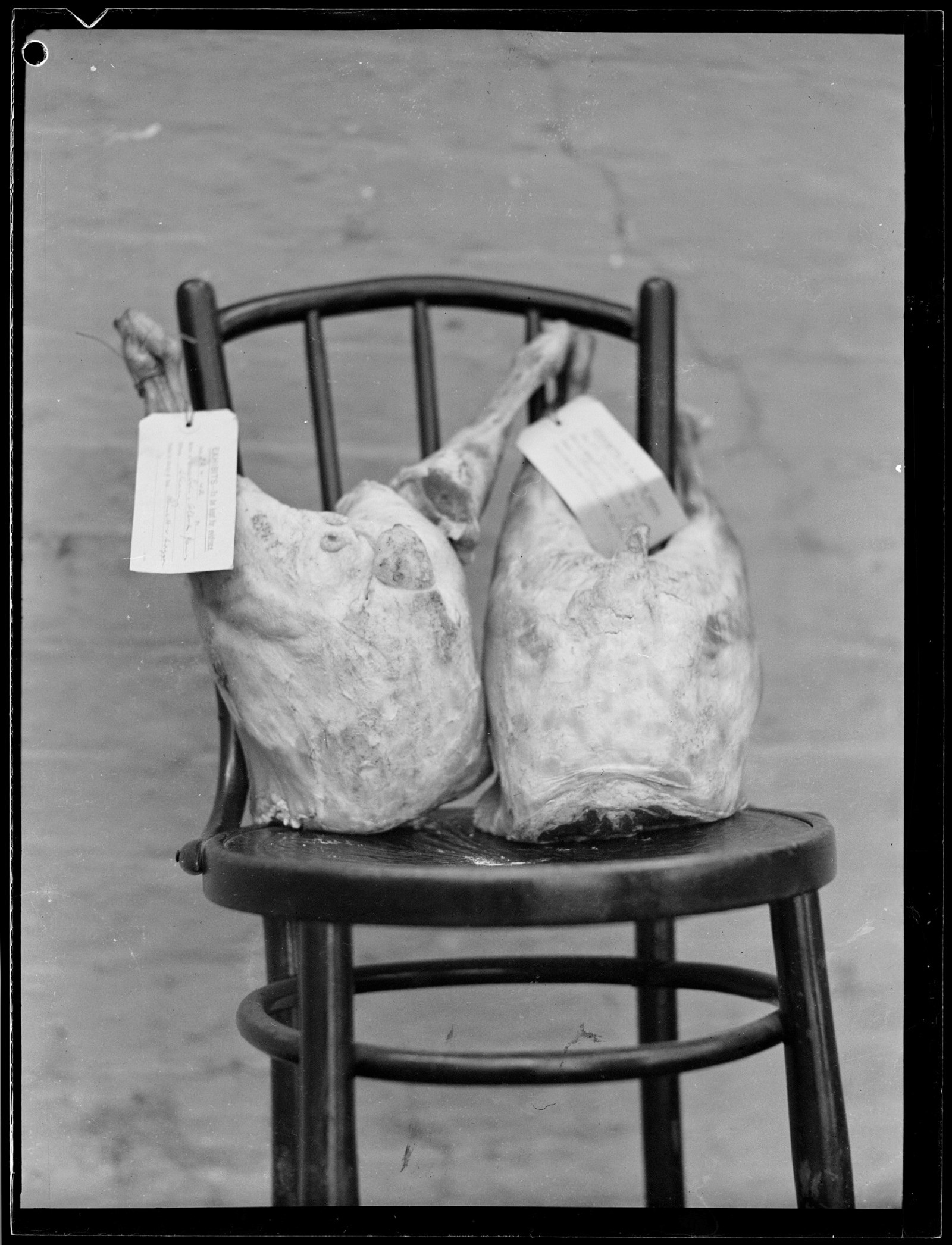Runaway Joe – a dog with many aliases
In the late 1940s, three swindlers targeted country greyhound races with a ‘ring-in’ scam that netted them a fortune and forced officials to reassess how they verified a dog’s identity.
Throughout its history, the racing industry has been a target for fraud. One scam, known as a ring-in, involves criminals finding two similar-looking animals and entering the superior runner in a race under the name of the inferior one. Those in the know place bets on the animal at good odds, based on its poor racing record. When the substitute wins, they collect large sums of money from the perplexed bookmaker.
The Fine Cotton horseracing scandal is perhaps the best known example of this type of fraud attempted in an Australian race. In 1984, a group of amateurish conspirators dyed the coat and spray-painted white markings on the legs of the superior runner Bold Personality and entered it in a Brisbane race under the name of the poorly performing Fine Cotton. Fine Cotton/Bold Personality won the race, but heavy betting at the racecourse and at TABs across the country prompted officials to investigate further, whereupon they uncovered the scam.
Unleashing Havoc
A lesser known story of a ring-in has recently come to light in the NSW Police Forensic Photography Archive. Filed in an envelope labelled "Runaway Joe" Greyhound racing dog’ are two negatives. The images show a bright-eyed, brindle-coloured greyhound on a leash held by a detective. Investigations into Runaway Joe’s colourful history show that in February 1949 it was entered into a greyhound race in Lismore in the state’s north under the name Brindle Havoc, and won the race by ten lengths. The conspirators had trimmed Runaway Joe’s grey tail hairs to fool the stewards into believing it was the darker Brindle Havoc, but officials were suspicious and an investigation was launched. As a result, three men – Andrew Schlecht, Norman Furlong and Eric Phipps – were charged with conspiracy to cheat and defraud.
Police claimed that over a number of years the three fraudsters had earned around £20,000 (the equivalent of over a million dollars today) as a result of numerous ‘ring-ins’ involving the same dog. During the court case, Runaway Joe was designated an ‘exhibit’ and was transported from the police kennels in Sydney to Lismore so its identity could be confirmed in court. Greyhound racing experts used registration cards to confirm Runaway Joe’s physical characteristics and compare them to Brindle Havoc’s identification diagram. Three bookmakers testified that they had collectively lost £187 (over $10,000 today) because of the Lismore race substitution and that if they’d known the dog’s true identity and race record they would have offered different odds. Schlecht, Furlong and Phipps were found guilty and sentenced to two years’ jail.
A dog’s life
Police believed that the dog may have been raced under assumed names at other country racetracks; in Grafton, an attempt was made to enter it in a race under the name Terry’s Best, and possibly elsewhere as Bobs Head. As a result of this scam, the National Coursing Association of NSW, which was involved in the oversight of greyhound racing, announced that it would bring in a new registration certificate that it declared would be ‘foolproof’. Some measures that were introduced were ear branding and new identification categories, including tooth and claw colour.
Runaway Joe received a life ban from the racetrack. It was kept for a year at the NSW Police kennels alongside working police dogs before being declared ‘unclaimed property’ under police regulations and sold at auction for £11. A racing steward ‘earmarked’ the unfortunate dog – cutting a piece out of its ear to ensure that it could never be substituted again. A condition of its sale was that it couldn’t be entered in any greyhound races or be used at stud. Things ended happily for the dog, however, when it was bought by a farmer who declared that the speedy canine would spend the rest of its life hunting rabbits in the countryside.
Related

Confidence tricks: the Spanish Prisoner
This confidence trick, dating back to 1897, is an early version of a Nigerian email scam. In the ‘Spanish Prisoner’ trick victims receive a letter postmarked from Barcelona from a prisoner asking for a sum of money

A Christmas crime
As Christmas approached, the Magistrates at the Water Police Court, now the Justice & Police Museum, were often faced with a very seasonal crime – the theft of Christmas hams
Published on
